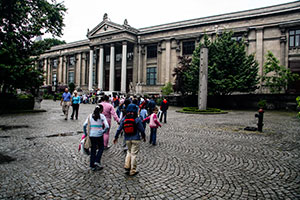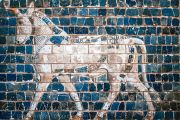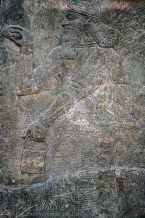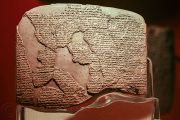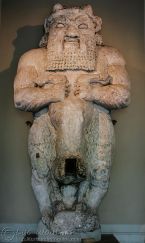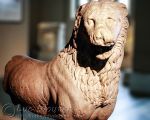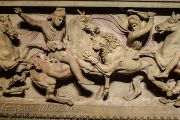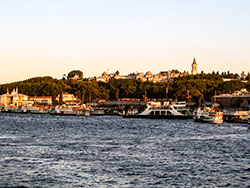Halfway between Gülhane Parkı and Topkapı Sarayı is the most interesting museum complex, the Istanbul Archaeology Museums (Arkeoloji Müzeleri). The museum complex consists of a courtyard with three separate exhibit areas: the Archaeology Museum or Arkeoloji Müzesi, the Museum of the Ancient Orient or Eski Şark Eserler Müzesi, and the Tiled Kiosk Museum or Çinili Köşk Müzesi. Both museums contain rich collections, of which the Alexander sarcophagus, the glazed brick friezes that once decorated the Ishtar Gate in ancient Babylon at the time of Nebuchadnezzar II (605 - 562 BC), and the Peace Treaty of Kadesh are certainly the highlights.
Historical background of the Istanbul Archaeology Museums
The site of the museum complex was part of the outer gardens of the Topkapı Palace. The museum complex was founded by decree as Imperial Museum in 1891 and was led by Osman Hamdi Bey, an intellectual, diplomat, painter, and archaeologist of Greek descent.
Sights and Photos of the Istanbul Archaeology Museums
Museum of the Ancient Orient
On the left, after the entrance is the Museum of the Ancient Orient. It houses a unique collection of pre-Islamic Arab, Babylonian, Hittite and Assyrian artefacts. Among these, the glazed brick panels of lions, dating from the reign of Nebuchadnezzar II (605 - 562 BC), that once decorated the Ishtar gate at ancient Babylon are the most outstanding. Noteworthy are also the neo-Babylonian statue of Puzur-Ishtar, Governor of Mari, the neo-Assyrian statue of King Shalmaneser III and the treaty of Kadesh, the oldest known peace treaty in the world.
https://www.turkeyphotoguide.com/istanbul-archaeology-museums#sigProIdafc661e0f1
Archaeology Museum
Opposite the Museum of the Ancient Orient is the Archaeology Museum, which is housed in an impressive neoclassical building, dating from 1896, that occupies the whole right side of the courtyard. In the lobby, we are confronted with a colossal statue of Bes, the Cypriot Hercules, who holds up a headless lioness by her hind paws. The statue comes from Cyprus and dates first to third century AD. The southern half of the museum houses an extensive collection of sculptures, grave stelae and sarcophagi of the archaic, classical, Hellenistic and Roman periods. Very touching is the funerary stele from Amisus (Samsun) showing the deceased bidding farewell to his two young sons.
The southern half of the museum contains a number of extraordinary sarcophagi that were discovered by Osman Hamdi Bey, director of the museum, at Sidon Lebanon in 1887. The most famous of these is the magnificent Alexander sarcophagus. Its name derives from the fact that it is decorated with a deep relief showing Alexander in hunting and battle scenes. The sarcophagus was made for King Abdalonymos of Sidon.
https://www.turkeyphotoguide.com/istanbul-archaeology-museums#sigProIde7e5ab14e5
Museum of Islamic Art - Tiled Kiosk Museum
The oldest building in the museum complex is the Tiled Kiosk (Çinili Köşk), which dates from 1472 and was built by Sultan Mehmet II the Conqueror as a pleasure palace in the Gülhane park of Topkapı. The building now houses the Museum of Islamic Art with some beautiful exhibits of Iznik and Kütahya tilework. A tiled mihrab from Karaman and a peacock fountain are certainly the not-to-be-missed highlights of the museum.
https://www.turkeyphotoguide.com/istanbul-archaeology-museums#sigProId5e43592143
Travel Information and Travel Tips
A visit to the Istanbul Archaeology Museums is easily combined with a visit to the Topkapı Palace museum. The museums are closed on Mondays.

